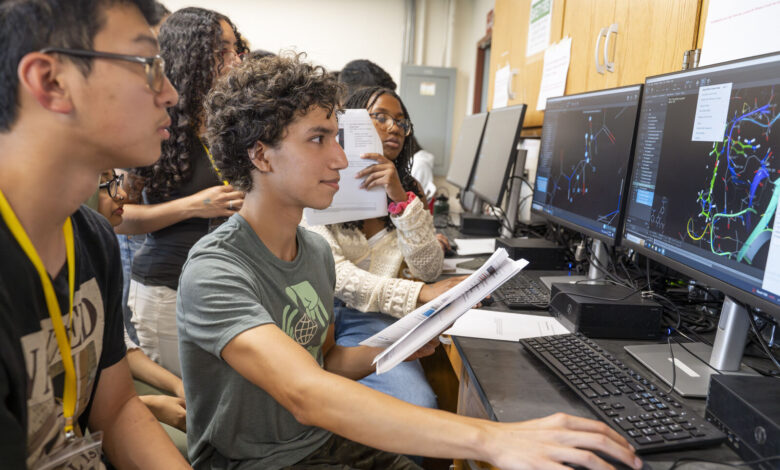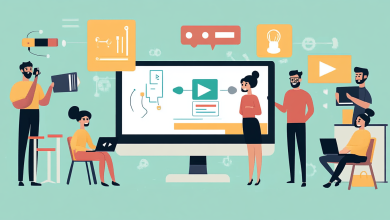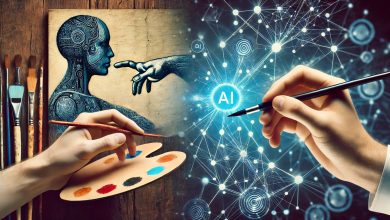
As I read a recent Fortune article about AI company Anthropic partnering with three universities to bring their chatbot Claude into the classroom for a better education process, I couldn’t agree more. It’s just about time. In fact, last year, I had built my own chatbot for the class I am teaching to enhance my students’ experience.
The Challenge: Keeping students engaged in intro biology
As a professor of chemistry and chemical biology at Stevens Institute of Technology, I’ve been watching students grow tired and disinterested in learning basic biology, a task that requires lots of rote memorization. Understanding biology is important not only for passing the course, but also for making dietary, health and medical decisions. Unfortunately, by the time we get to these crucial concepts, students lose interest, bogged down by the overwhelming amount of information.
Learning modern biology requires hours of memorization, especially in the beginning, which certainly applies to my first semester biology course. While other disciplines, like math or physics, rely more on understanding the concepts and applying logic, biology begins with memorizing a massive number of facts, which may seem to be of little use in everyday life. Still, students must retain the basics of cell innerworkings—DNA, RNA, ribosomes, proteins—before they are able to visualize, comprehend, and integrate these high-level concepts into real life context.
But not everyone loves—or is able to—memorize huge amounts of seemingly irrelevant information. That obstacle hampers learning and dampens students’ curiosity about the subject. Less than half-way into the semester, struggling students begin to disengage. I have been thinking about how to make basic biology more relevant and exciting.
The process: Bringing an AI “teaching assistant” into the classroom
The arrival of ChatGPT presented an opportunity. I decided to recruit ChatGPT 4o as my “AI teaching assistant” to make the course more interactive and applicable to real life situations. I uploaded the relevant chapters of an open resource textbook (OpenStax Biology 2e) into ChatGPT 4o. My course is called BIO 181, so I named my “AI teaching assistant” BIO181 GPT and used it to help 45 students who took the class investigate practical tasks and problems.
For example, early in the course, we discussed what constitutes life and how living beings are different from non-living entities. I presented the class with a picture of a toad sitting on a piece of concrete and asked, “why is the toad alive but the concrete is not?” Students then discussed it with each other and summarized their findings. At the end, they asked BIO181 GPT “what are the major characteristics of life,” which they compared to their own definitions—and identified any differences.
In another instance, students used BIO181 GPT to inquire about DNA’s molecular structure, replication, transcription to RNA, translation to proteins, and mutations that lead to genetic disorders such as cystic fibrosis. I presented them with about 20 questions that they answered by interacting with BIO181 GPT, building knowledge of the proteins’ crucial role in human health and the diseases caused by the breakdown of the translation process. I could’ve just talked about it for an hour and put them all to sleep; instead doing the research themselves helped them actively engage in the process, adding an element of a personal investment through a practical quest.
An even more interesting example of BIO181 GPT’s “teaching assistance” was devising a scientific study for creating genetically modified chicken, resistant to avian flu, which is wreaking havoc on our poultry right now. Students were asking BIO181 GPT some very interesting questions: how you can design a study to check whether it’s safe to eat a genetically edited chicken; how many chickens must be sacrificed to test their ability to withstand the avian flu; and what kind of a testing environment was needed. (By the way, we found that BIO181 GPT did a pretty good job with that.) To wrap up, students discussed the technical, ethical and societal perspective of running such a real-life study.
The results: Many student benefits and room for improvement
At the end of the course, I conducted an anonymous survey to see what students thought of it. The results were inspiring. Almost 90 percent of students expressed increased confidence in completing these hands-on learning activities and over 70 percent reported increased curiosity when interacting with BIO181 GPT. Sixty-seven percent said that using BIO181 GPT made learning more enjoyable, indicating the satisfaction of addressing problems independently with AI’s assistance. Finally, 78 percent wrote that BIO181 GPT responses helped them relate biological concepts to real-life contexts, particularly when working on the genetically edited chicken assignment.
Students also reported some issues. About 44 percent had difficulties interacting with BIO181 GPT, and 33 percent reported information overload and feeling overwhelmed by the volume of material it supplied; they had to spend more time refining their queries. We also discovered that AI wasn’t without fault—10 of the 45 students spotted inaccurate information in its answers and brought it to my attention. And there were some surprising revelations, too. For example, I learned that some students in my class had never used ChatGPT before.
What’s next?
My experience with BIO181 GPT suggests that guided use of generative AI tools can help enhance student motivation, boost curiosity and generally make learning more enticing. Perhaps even more importantly, students emerged from the course not feeling bogged down by loads of seemingly irrelevant information, but instead saw how basic biology can help solve real life problems. I’m hopeful that after taking this class, they will be able to investigate certain things for themselves too—such as how to eat better or stay healthy.
I am also hoping that this experience equips them with the ability to make better informed medical decisions, such as investigating how a particular medicine works in the body if they have to take it, or what to expect from a medical procedure if they have to undergo one. These are very useful practical skills that typically aren’t covered as part of a college education, let alone in basic biology classes. These students learned how to apply principles of biology to real world challenges and use AI to do so. I believe that will serve them more than memorizing long lists of facts.




